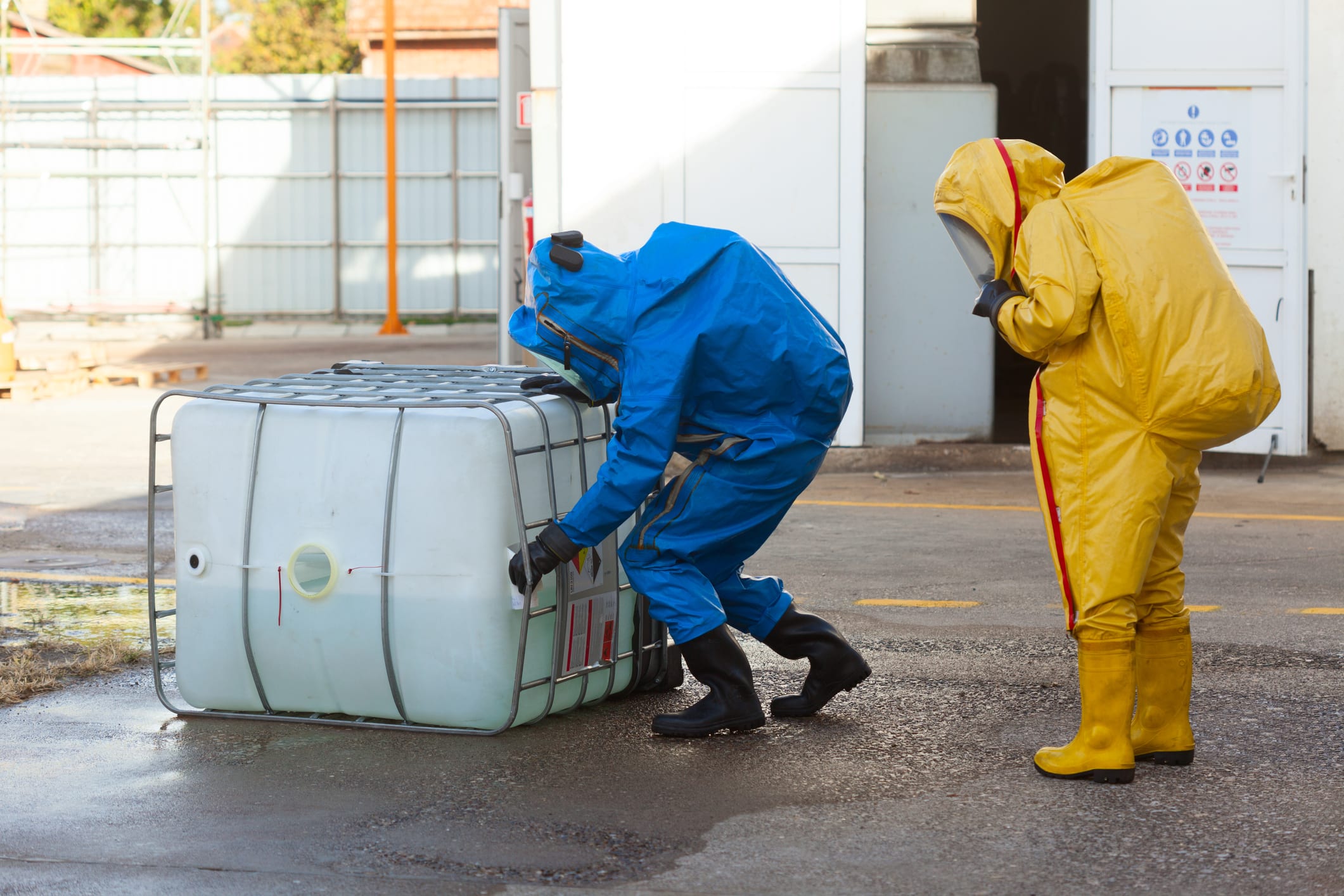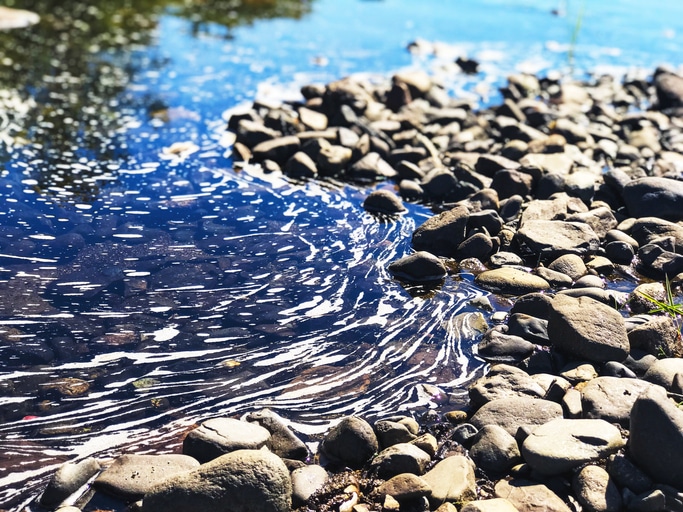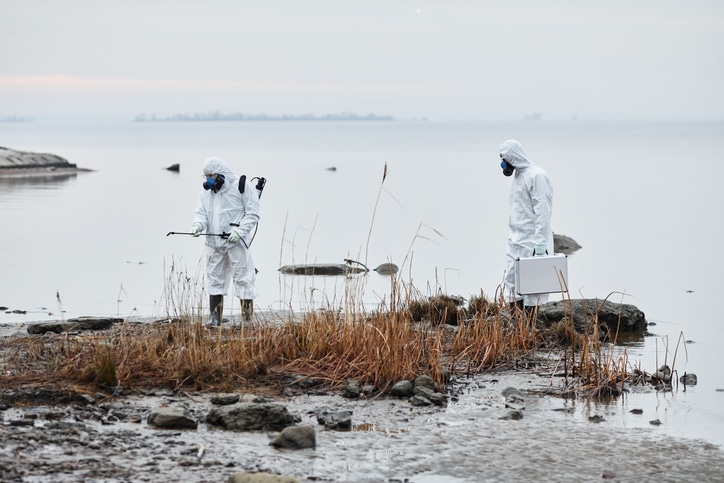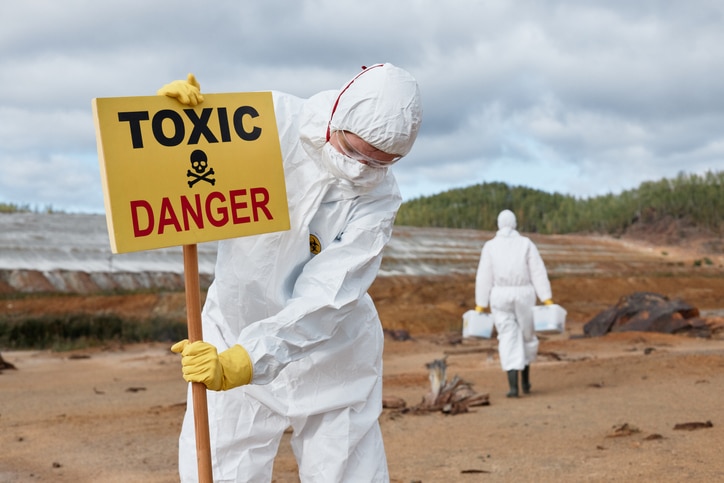Biohazard clean up is a specialized service that involves the careful and thorough removal of potentially harmful materials from a space. These materials can include biological substances, chemicals, or other hazardous materials that pose a risk to human health and the environment. Such clean up requires expertise, advanced equipment, and strict adherence to safety protocols to ensure the effective elimination of any health risks associated with these substances.
Our team of expert biohazard cleanup specialists in Richmond, VA offers comprehensive cleaning services, including the removal of harmful chemicals and biohazard remediation. Contact us today.
What Are Biohazards?
Biohazards are substances or organisms that pose a threat to human health or the environment. They can be found in various forms, including blood, bodily fluids, viruses, bacteria, and other microorganisms. Biohazards can be present in crime scenes, accident sites, and areas where there has been a death or injury. They can also be found in homes and businesses where there has been a sewage backup, flood, or other type of water damage.
Examples of biohazards include: Blood and bodily fluids, Viruses and bacteria, Fungi and mold, Rodent waste and droppings, Sewage and wastewater, Chemicals and toxins.
Handling biohazards requires extreme care and caution due to the serious health risks they pose. Proper biohazard cleanup necessitates specialized training and equipment to ensure thorough cleaning and disinfection, safeguarding both human health and the environment.

What Does Biohazard Cleanup Entail?
Biohazard cleanup entails an orderly and systematic cleaning process of identifying, containing, removing, and disposing of hazardous materials in a manner that eliminates the risk of contamination. This process often involves the use of specialized equipment and protective gear to ensure the safety of both the cleanup crew and the environment.

What Process is Used in the Biohazard Clean Up?
The biohazard clean up process typically involves thorough assessment and planning, containment of the affected area, removal of hazardous materials, disinfection and decontamination of the space, and proper disposal of the biohazardous waste. Each step is executed with precision and adherence to stringent industry standards to guarantee a safe and clean environment post-cleanup.
Effects of Biohazards
Biohazards can have severe implications for both human health and the ecosystem. Exposure to these hazardous materials can lead to infections, diseases, and in extreme cases, fatalities. Additionally, biohazards can contaminate water sources, soil, and air, leading to widespread environmental damage if not properly contained and managed.

Health Implications
Exposure to biohazards can result in a range of health complications, from mild infections to severe and life-threatening diseases. Pathogens present in biohazards, such as bacteria, viruses, or fungi, can quickly infiltrate the human body, causing illnesses like gastrointestinal infections, respiratory diseases, skin irritations, and more. These health issues can be especially concerning for individuals with weakened immune systems, children, and the elderly, as they are more susceptible to the adverse effects of these hazardous materials.

Environmental Contamination
Biohazards, when improperly managed, can contaminate vital environmental resources such as water sources, soil, and air. Water contamination can occur through the release of hazardous substances into rivers, lakes, or groundwater, posing a significant threat to aquatic life and potentially affecting the drinking water supply for communities. Soil contamination can hinder the growth of plants and crops, leading to a reduction in agricultural productivity and potentially causing long-term damage to the ecosystem. Airborne biohazards can exacerbate respiratory issues and contribute to air pollution, affecting not only human health but also the well-being of the surrounding wildlife.

Ecosystem Disruption
The presence of biohazards can disrupt the delicate balance of ecosystems, leading to a decline in biodiversity and the potential extinction of certain species. When biohazards infiltrate natural habitats, they can harm plants and animals, disrupt food chains, and cause irreversible damage to entire ecosystems. This disruption can have cascading effects, impacting everything from the food supply to the stability of entire ecological systems.

Long-Term Effects
The long-term effects of biohazard contamination can be particularly insidious. Residual biohazards left untreated can persist in the environment, posing a persistent threat to both human and environmental health. The accumulation of these hazardous materials over time can lead to chronic health issues, persistent environmental degradation, and a heightened risk of disease outbreaks, creating a cycle of detrimental consequences that can be challenging to reverse without timely and comprehensive intervention.
Given the potential severity of these effects, it is crucial to address biohazards swiftly and effectively, implementing rigorous containment and cleanup measures to minimize their impact on human health and the environment. Omega Disaster Restoration is dedicated to mitigating the effects of biohazards, ensuring the safety and well-being of communities and the preservation of the environment through expert cleanup and remediation services.
Different Types of Biohazards
Biohazards come in various forms, including but not limited to infectious waste, bloodborne pathogens, chemical spills, and other toxic substances. These materials can originate from a range of sources such as medical facilities, industrial sites, crime scenes, or natural disasters, making their effective and safe removal essential in safeguarding public health and the environment.
This category includes materials contaminated with pathogens, such as used bandages, cultures, swabs, and other medical waste. Infectious waste from healthcare facilities, research laboratories, and even households where there are individuals with infectious diseases can pose a significant risk if not handled and disposed of properly.
Biohazards can also comprise bloodborne pathogens, which are infectious microorganisms present in human blood that can cause diseases in humans. Accidental exposure to bloodborne pathogens, often encountered in medical settings, can lead to severe health risks, including the transmission of HIV, hepatitis B, and hepatitis C.
Recognizing the diverse origins and characteristics of these biohazards underscores the importance of employing specialized expertise and adherence to strict safety protocols during their removal and remediation. Omega Disaster Restoration's comprehensive approach to biohazard cleanup ensures that all types of biohazards are effectively identified, contained, and safely eliminated, protecting both human health and the environment from potential harm.
Biohazards also encompass a wide range of toxic substances, including pesticides, heavy metals, and other hazardous chemicals that can be harmful if ingested, inhaled, or come into contact with the skin. These substances can originate from various sources such as industrial processes, manufacturing facilities, and waste disposal sites, posing risks to both human and environmental well-being.
Chemical spills, whether in industrial settings, laboratories, or during transportation, can constitute biohazards, especially if the chemicals are toxic or pose a threat to human health and the environment. Improper handling or containment of these spills can result in contamination of water sources, soil, and air, leading to long-term environmental damage and health risks.
Crime scenes can contain biohazards such as bodily fluids, tissues, or other materials that could potentially carry infectious diseases or other health risks. Proper cleanup and decontamination of these scenes are critical not only for public safety but also for maintaining the integrity of any ongoing investigations.
Certain biological agents, such as bacteria, viruses, and fungi, can be classified as biohazards, particularly when they have the potential to cause harm to human health or the environment. These agents can be found in various settings, including research laboratories, agricultural environments, and natural habitats, and can lead to widespread health concerns if not effectively controlled and managed.
Our Services
Crime Scene Cleanup
Crime scene cleanup is a specialized service that involves the removal and disposal of biohazardous materials from a crime scene. This can include blood, bodily fluids, and other substances that may be present at the scene. Our team of professional technicians is trained to handle crime scene cleanup with care and discretion, ensuring that the area is properly cleaned and disinfected.
We understand that crime scenes can be traumatic and emotional for those involved, and we approach each situation with sensitivity and compassion. Our goal is to provide extraordinary customer service and ensure that the area is restored to a safe and clean condition.
Suicide Cleanup
Suicide cleanup is a sensitive and emotional service that requires specialized training and equipment. Our team of professional technicians is trained to handle suicide cleanup with care and discretion, ensuring that the area is properly cleaned and disinfected.
We understand that suicide can be a traumatic and emotional experience for family members and loved ones, and we approach each situation with sensitivity and compassion. Our goal is to provide professional and compassionate service, ensuring that the area is restored to a safe and clean condition.
Other Cleanup Service
we also offer a range of other cleanup services, including:
- Rodent waste cleanup
- Sewage cleanup
- Flood cleanup
- Mold remediation
- Trauma cleanup
Our team of professional technicians is trained to handle a wide range of cleanup situations, and we approach each situation with care and discretion. Whether you need crime scene cleanup, suicide cleanup, or other cleanup services, we are here to help.
Why Choose Omega for Biohazard Cleanup?
Omega Disaster Restoration stands out as a reliable and experienced partner for biohazard cleanup in Richmond Virginia. Our team of highly trained professionals is equipped with the latest technology and follows industry best practices to ensure a thorough and effective cleanup process. The way our company operates highlights our professionalism and thoroughness, efficiently handling challenging situations to demonstrate our commitment to customer satisfaction and quality of work.
With our commitment to safety, efficiency, and environmental responsibility, we guarantee a swift restoration of affected spaces, providing peace of mind for both our clients and the communities we serve.
Contact our Richmond biohazard cleanup specialists at Omega today.
